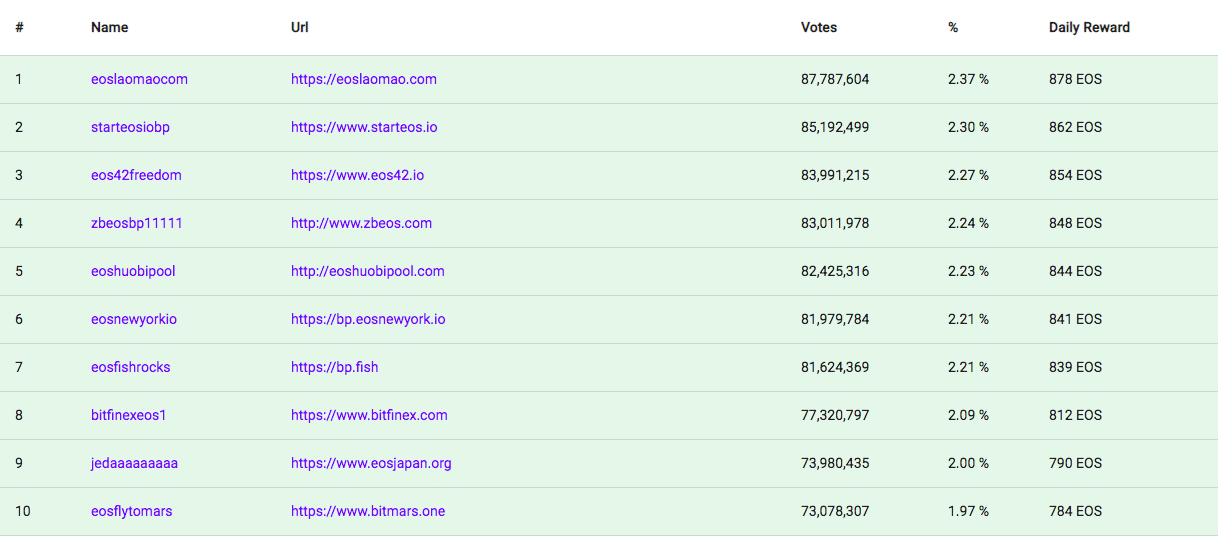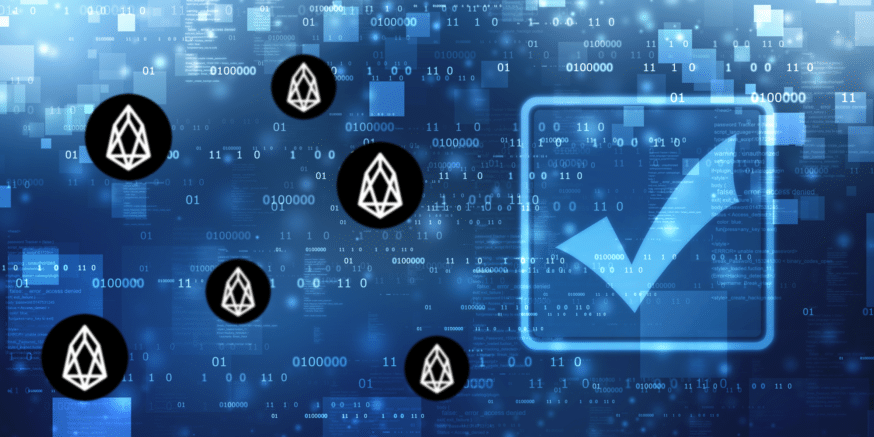- How to Become an EOS Delegate
- EOS Delegate Hardware Requirements
- How to Register as an EOS Delegate
- How to Improve Your Chances of Becoming a Block Producer
- Is Becoming an EOS Delegate Worth It?
How to Become an EOS Delegate
After hearing that some EOS delegates are making up to $5,000 per day in EOS tokens, you’re probably wondering how you can get a piece of that action. We’ve got good news for you. Becoming an EOS delegate isn’t as tricky as you would think. And, there’s no limitation on who can become one.
In this guide, we show you how to become an EOS delegate as well as how to increase your odds in becoming one of the twenty-one Block Producers. Let’s begin.
Fair Warning: If you want to become an EOS delegate, you need to be comfortable around software and hardware. Specifically, you should be familiar with GitHub, a Command Line Interface (CLI), and the hardware specs of the machine you’re using, at the very least.
EOS Delegate Hardware Requirements
EOS’s hardware requirements for delegates are minimal. According to EOS founder, Dan Larimer, “EOSIO can run with very little memory, less than 100MB + shared memory file size. The requirements for the shared memory file depends upon the state of your local application (number of users, etc).” Other than the memory requirement, there’s not much else.
How to Register as an EOS Delegate
Note: These instructions assume you have already cloned EOSIO from the GitHub repository, configured the cleos command line tool, and have an EOS wallet with some EOS in it.
Step 1. Create a bp_info.json with the information outlined in the EOS BP Information Standard.
Step 2. If you don’t have one already, create a website for your delegate (i.e., https://EOSCoinCentral.com).
Step 3. Add your JSON file to the root of your website domain (i.e., https//EOSCoinCentral.com/bp.json).
Step 4. Register as an EOS delegate by running the following cleos command:
cleos system regproducer <accountname> <producer_key> <url> <location>
-
- accountname – should have up to 12 characters. Each character should either be a lowercase letter or a number 1 through 5. The first character should be a lowercase letter, not a number.
- producer_key – the public key from your Producer Keypair.
- url – the website you set-up in step 2.
- location – relative location for nearest neighbor scheduling
Step 5. Verify you are now a delegate by running the command:
cleos system listproducers
You should be able to find your account name in the list with the number of votes that you have.

How to Improve Your Chances of Becoming a Block Producer
EOS Go, a community-run organization, created a list of eight criteria that every delegate should have. Each week leading up to the launch, EOS Go reviewed the delegates and ranked them according to these criteria. Delegates with a higher ranking inevitably gained more votes towards becoming a Block Producer. Although these items weren’t required, the community viewed delegates with them in higher regard.
EOS Go has since halted their weekly reviews. However, you should still abide by the standards if you want to become a Block Producer. The eight standards are:
Public Website URL (And Social Media Accounts)
A community presence is vital for a delegate. You should have a website that community members can visit to learn more about your plans as a delegate. What are your goals? How will you benefit the EOS ecosystem?
Use your social media accounts to engage with others. They’re an excellent platform to make announcements and answer questions.
Links to ID Information
Create links and make the following information available to the public:
- Official block producer candidate name
- Location of company headquarters
- Expected location of servers
- Type of servers (cloud, bare metal, etc.)
- Current employee list and pictures of at least 67% of staff
- Relevant background qualifications for at least 67% of staff
EOS token holders care about this information. They don’t want to have to spend hours trying to find it.
Technical Specifications and Resource Expenditure
In this section, you should estimate what your operating costs will be as a delegate. Be clear in what type of hardware you’re using as well as what you’re doing to maintain it.
Hardware Scaling Plan
As the EOS network grows, you need to have a plan on how to handle this as a delegate.
Community Benefit Project Outline
EOS supporters are adamant about delegates using a portion of their block rewards for community projects. When you’re making $500 to $5,000 a day (at current prices), you can afford to give back a little bit.
List of Telegram and Testnet Node Names
Listing your Telegram information allows community members to reach out if they have any questions or comments. Providing the node names on the testnet enable community testnet participation and testing.
Block Producer Candidate Roadmap
The roadmap is a more in-depth document that further outlines some of the previous points. It includes “values, community project timeline, finances, transparency, or any other topic the candidate deems important.”
Position on Dividends
Lastly, you should document whether or not you’re going to distribute EOS inflation rewards to token holders, and if you are, how you’ll do so.
[thrive_leads id=’5219′]
Is Becoming an EOS Delegate Worth It?
That’s up to you. Doing the bare minimum to become an EOS delegate only requires you to run a few commands from your CLI. However, procuring hardware that scales with the network, building community trust, and gaining enough votes to secure an income are going to be challenging.
Current Block Producers have at least 60 million votes. And the reward-earning delegate with the least amount of votes still has close to 16 million.
At this point, it’s going to be an uphill battle for you. But delegates are bound to come and go over the next few years. So, it’s never too late to get started trying.
Never Miss Another Opportunity! Get hand selected news & info from our Crypto Experts so you can make educated, informed decisions that directly affect your crypto profits. Subscribe to CoinCentral free newsletter now.










